Browse our Growing Library of Success Stories
By:
Working Lands for Wildlife Prescribed burns and strategic grazing practices have made the Nichols Ranch more profitable, as well as more productive for livestock and wildlife.
Prescribed burns and strategic grazing practices have made the Nichols Ranch more profitable, as well as more productive for livestock and wildlife.
https://www.landcan.org/success/Resetting-The-Gypsum-Hills-With-Fire-To-Keep-Grasslands-TreeFree/3841/
By:
Working Lands for Wildlife
Landowners Tim and Sarah Bailey work with a conservation-minded ranch manager to keep South Dakota’s prairies intact and profitable for livestock grazing.
https://www.landcan.org/success/Iconic-South-Dakota-Ranch-Removes-Trees-To-Restore-Waving-Grass/3840/
By:
Working Lands for Wildlife
Chris and Cole Mushrush are keeping grasslands tree-free on their ranch in Strong City, Kansas, and using virtual fencing to repair eroding soils.
https://www.landcan.org/success/Kansas-Ranchers-Use-New-Strategies-to-Preserve-Prairie-Lands/3839/
By:
Working Lands for Wildlife This ranch in the Sandhills relies on healthy prairies to support two businesses: a tourist-based outfitting company and for feeding cattle.
This ranch in the Sandhills relies on healthy prairies to support two businesses: a tourist-based outfitting company and for feeding cattle.
https://www.landcan.org/success/Lighting-A-Match-To-Preserve-Nebraskas-Prairie/3838/
By:
Working Lands for Wildlife GREAT PLAINS ‘GUARDIANS OF THE GRASSLANDS SERIES | Scott Westrup was one of the first landowners in Oklahoma to sign up for the NRCS Great Plains Grassland Initiative to get rid of trees infesting his pastures.
GREAT PLAINS ‘GUARDIANS OF THE GRASSLANDS SERIES | Scott Westrup was one of the first landowners in Oklahoma to sign up for the NRCS Great Plains Grassland Initiative to get rid of trees infesting his pastures.
https://www.landcan.org/success/Goats-Shears-Fire-And-Teamwork-The-Recipe-Saving-Oklahomas-Grazing-Lands/3837/
By:
Working Lands for Wildlife “Little Miss Clearcut” is restoring the prairie with loppers and a handsaw to keep woody invaders from taking over her grassland pastures.
“Little Miss Clearcut” is restoring the prairie with loppers and a handsaw to keep woody invaders from taking over her grassland pastures.
https://www.landcan.org/success/Saving-Nebraskas-Sandhills-One-Tree-At-A-Time/3836/
By:
Ted WilliamsFish are cold, slimy, unfeathered, unfurred, unheard, and usually unseen by non-anglers. So for the general public, including much of the environmental community, fish don’t count as wildlife.
https://www.landcan.org/success/Fish-are-wildlife-too-And-the-National-Park-Service-is-Recovering-Our-Lost-Natives/3833/
By:
Family Farm AllianceThis multi-generation family takes care of their livestock and ranch in a way that prioritizes the health of the land. They actively participate in conservation efforts and land stewardship programs, including conservation easements and river bank restoration projects in partnership with Fish and Wildlife. Preserving the integrity of their ranch and managing it responsibly is of utmost importance to them, and they have put considerable effort into estate planning to ensure its continued success.
https://www.landcan.org/success/Women-in-Ranching--Savery-Wyoming/3820/
By:
Jeff DiLuccia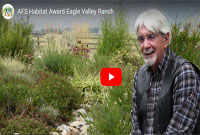 Nikos Monoyios has transformed the Lemhi river in northeastern Idaho to restore salmon spawning habitat. Nikos owns Eagle Valley ranch just south of salmon, Idaho. What Nikos and his wife Valerie have done is truly Olympian, and just proves Margaret Meade’s famous saying that :”Never doubt that a small group of thoughtful, committed citizens can change the world…” Nikos is the living embodiment of private land owners being the phalanx for conservation and species restoration.
Nikos Monoyios has transformed the Lemhi river in northeastern Idaho to restore salmon spawning habitat. Nikos owns Eagle Valley ranch just south of salmon, Idaho. What Nikos and his wife Valerie have done is truly Olympian, and just proves Margaret Meade’s famous saying that :”Never doubt that a small group of thoughtful, committed citizens can change the world…” Nikos is the living embodiment of private land owners being the phalanx for conservation and species restoration.
https://www.landcan.org/success/American-Fisheries-Association-Aquatic-Habitat-Award/3798/
By:
Ashley Pratt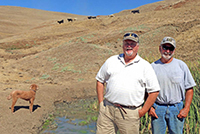 Sparling Ranch Conservation Bank creates a win-win for ranchers, developers, wildlife
Sparling Ranch Conservation Bank creates a win-win for ranchers, developers, wildlife
https://www.landcan.org/success/Where-Cattle-Graze-and-Salamanders-Roam/3327/
By:
Sage Grouse Initiative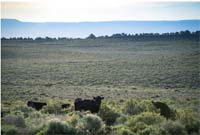 Research from an eight-year study in the Warner Mountains shows why strategically removing encroaching trees spells good news for sage grouse, a declining upland bird that serves as a benchmark for the overall health of the sagebrush biome. Researchers quantified a six-fold increase in sage grouse’s preferred habitat following woodland management and a population growth rate that was +12 percent higher in the treated area than in the control area without management.
Research from an eight-year study in the Warner Mountains shows why strategically removing encroaching trees spells good news for sage grouse, a declining upland bird that serves as a benchmark for the overall health of the sagebrush biome. Researchers quantified a six-fold increase in sage grouse’s preferred habitat following woodland management and a population growth rate that was +12 percent higher in the treated area than in the control area without management.
This adds to a growing list of research — much of it based on the long-term study in the Warners — that documents the myriad benefits of conifer removal for wildlife and grazing lands.
https://www.landcan.org/success/Restoring-the-Sagebrush-Sea-The-Warner-Mountains-Story/3757/
By:
Leopold Conservation Award Program
“Treat the range like a lady,” is just one piece of advice Gilbert Yardley gave his son Steven.
For five generations the Yardleys have embraced a sacred stewardship for the land their livelihood depended on.
Best known for selling high quality beef cattle, the Yardleys know good livestock production begins with conservation practices that benefit the forage upon which their cattle rely.
https://www.landcan.org/success/Yardley-Cattle-Company/3772/
By:
Leopold Conservation Award Program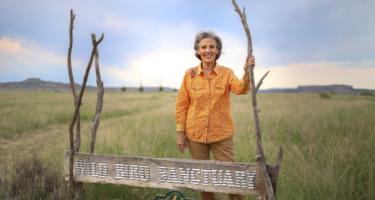 Inspired by seven generations of family on the land and Aldo Leopold’s land ethic, Tuda Libby Crews approached land restoration by collaborating with others.
Inspired by seven generations of family on the land and Aldo Leopold’s land ethic, Tuda Libby Crews approached land restoration by collaborating with others.
Tuda and her husband Jack realized restoration of Ute Creek Cattle Company required open minds, innovation, and financial/technical resources. Implementing conservation practices has transformed their shortgrass prairie ecosystem.
https://www.landcan.org/success/Ute-Creek-Cattle-Company/3771/
By:
Leopold Conservation Award Program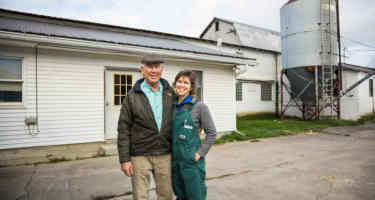 When it comes to on-farm research, Table Rock Farm is at the head of the class.
When it comes to on-farm research, Table Rock Farm is at the head of the class.
Its owners and employees have long understood the importance of opening the dairy farm’s barns and fields to researchers. Whether it’s improving conservation, cows or crops, the results have a positive ripple effect throughout agriculture.
https://www.landcan.org/success/Table-Rock-Farm/3770/
By:
Leopold Conservation Award Program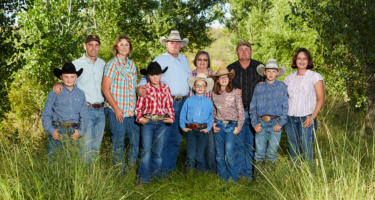 Sarah Sortum and Adam Switzer are siblings and fourth-generation ranchers committed to the stewardship of Switzer Ranch.
Sarah Sortum and Adam Switzer are siblings and fourth-generation ranchers committed to the stewardship of Switzer Ranch.
They express a land ethic passed down from their parents, Bruce and Sue Ann Switzer, by implementing agricultural conservation practices and connecting others with nature.
https://www.landcan.org/success/Switzer-Ranch/3769/
By:
Leopold Conservation Award Program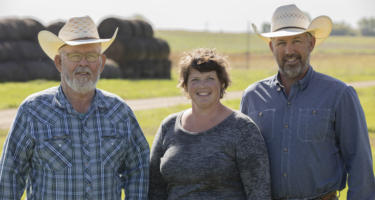 The same can be said of his implementation of conservation practices at Sand Ranch ever since.
The same can be said of his implementation of conservation practices at Sand Ranch ever since.
“When you take an active role in making the land better, it’ll take care of you and the people who eat your food,” Brad said.
https://www.landcan.org/success/Sand-Ranch/3768/
By:
Leopold Conservation Award Program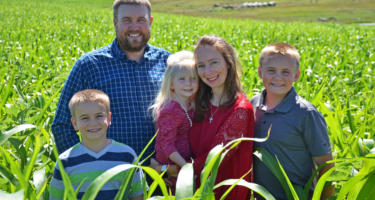 Aldo Leopold wrote, “Prairie was, in fact, a community of wild animals and plants so organized, as to build, through the centuries, the rich soil which now feeds us.”
Aldo Leopold wrote, “Prairie was, in fact, a community of wild animals and plants so organized, as to build, through the centuries, the rich soil which now feeds us.”
Levi and Crystal Neuharth connect with this quote, as they sustainably manage cropland and grassland at Prairie Paradise Farms.
https://www.landcan.org/success/Prairie-Paradise-Farms/3767/
By:
Leopold Conservation Award Program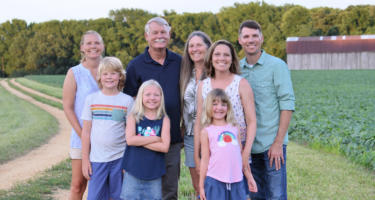 When the Warrings bought their farm in 2009, they set out to leave it better than they found it. Their Persistence Creek Farm has become a confluence of how farming, fishing and forestry businesses can benefit natural resources.
When the Warrings bought their farm in 2009, they set out to leave it better than they found it. Their Persistence Creek Farm has become a confluence of how farming, fishing and forestry businesses can benefit natural resources.
Healthier soil leads to higher crop yields. Cleaner water leads to higher crab and oyster populations. Agricultural conservation practices are good for the bottom line and natural resources.
https://www.landcan.org/success/Persistence-Creek-Farm/3766/
By:
Leopold Conservation Award Program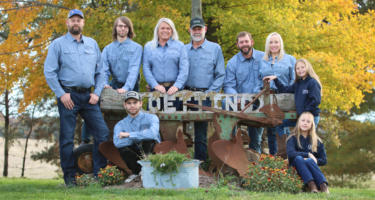 In the 1970s, the Oettings transitioned from dairy to pork production. To store swine manure, they constructed a three-lagoon system with an adjoining 2.8 acre lake which eliminated the need to purchase 1.3 million gallons of fresh water annually. The lake is used for watering livestock and other farm uses including washing barns. Effluent treated in the lagoons is recycled to provide nutrients for crops at a much lower cost than commercial fertilizer.
In the 1970s, the Oettings transitioned from dairy to pork production. To store swine manure, they constructed a three-lagoon system with an adjoining 2.8 acre lake which eliminated the need to purchase 1.3 million gallons of fresh water annually. The lake is used for watering livestock and other farm uses including washing barns. Effluent treated in the lagoons is recycled to provide nutrients for crops at a much lower cost than commercial fertilizer.
A healthy population of stocked bluegill, catfish and bass are a testament to the Oettings’ success in appropriately applying effluent on the fields in an environmentally sound way.
https://www.landcan.org/success/Oetting-Homestead-Farms/3765/
By:
Leopold Conservation Award Program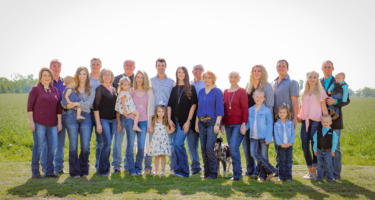 “We understand that our ranch is not just a collection of land, plants, cattle, and wildlife,” says Dallas May, “but it is a community.”
“We understand that our ranch is not just a collection of land, plants, cattle, and wildlife,” says Dallas May, “but it is a community.”
Conserving that community in a sustainable way is a goal shared by Dallas and his wife Brenda, and the families of their grown children: Holly, Riley and Haley.
https://www.landcan.org/success/May-Ranch/3764/
 Sign In
Sign In
 Sign In
Sign In
